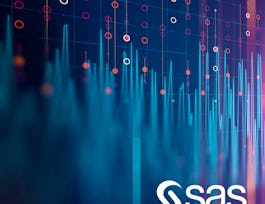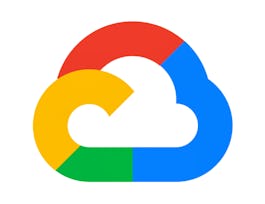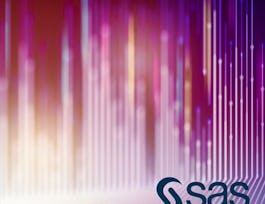This introductory course is for SAS software users who perform statistical analyses using SAS/STAT software. The focus is on t tests, ANOVA, and linear regression, and includes a brief introduction to logistic regression.


Regression Modeling Fundamentals
This course is part of SAS Statistical Business Analyst Professional Certificate
Taught in English

Instructor: Jordan Bakerman
6,782 already enrolled
Included with 
Course
(47 reviews)
Skills you'll gain
Details to know

Add to your LinkedIn profile
33 quizzes
Course
(47 reviews)
See how employees at top companies are mastering in-demand skills

Build your Data Analysis expertise
- Learn new concepts from industry experts
- Gain a foundational understanding of a subject or tool
- Develop job-relevant skills with hands-on projects
- Earn a shareable career certificate from SAS


Earn a career certificate
Add this credential to your LinkedIn profile, resume, or CV
Share it on social media and in your performance review

There are 5 modules in this course
In this module you learn about the course and the data you analyze in this course. Then you set up the data you need to do the practices in the course.
What's included
2 videos5 readings
In this module you explore several tools for model selection. These tools help limit the number of candidate models so that you can choose an appropriate model that's based on your expertise and research priorities.
What's included
11 videos3 readings4 quizzes
In this module you learn to verify the assumptions of the model and diagnose problems that you encounter in linear regression. You learn to examine residuals, identify outliers that are numerically distant from the bulk of the data, and identify influential observations that unduly affect the regression model. Finally, you learn to diagnose collinearity to avoid inflated standard errors and parameter instability in the model.
What's included
18 videos7 quizzes
In this module you learn how to transition from inferential statistics to predictive modeling. Instead of using p-values, you learn about assessing models using honest assessment. After you choose the best performing model, you learn about ways to deploy the model to predict new data.
What's included
11 videos1 reading4 quizzes
In this module you look for associations between predictors and a binary response using hypothesis tests. Then you build a logistic regression model and learn about how to characterize the relationship between the response and predictors. Finally, you learn how to use logistic regression to build a model, or classifier, to predict unknown cases.
What's included
25 videos18 quizzes
Instructor

Offered by
Recommended if you're interested in Data Analysis
Why people choose Coursera for their career




Learner reviews
Showing 3 of 47
47 reviews
- 5 stars
78.72%
- 4 stars
17.02%
- 3 stars
2.12%
- 2 stars
0%
- 1 star
2.12%
New to Data Analysis? Start here.

Open new doors with Coursera Plus
Unlimited access to 7,000+ world-class courses, hands-on projects, and job-ready certificate programs - all included in your subscription
Advance your career with an online degree
Earn a degree from world-class universities - 100% online
Join over 3,400 global companies that choose Coursera for Business
Upskill your employees to excel in the digital economy
Frequently asked questions
Access to lectures and assignments depends on your type of enrollment. If you take a course in audit mode, you will be able to see most course materials for free. To access graded assignments and to earn a Certificate, you will need to purchase the Certificate experience, during or after your audit. If you don't see the audit option:
The course may not offer an audit option. You can try a Free Trial instead, or apply for Financial Aid.
The course may offer 'Full Course, No Certificate' instead. This option lets you see all course materials, submit required assessments, and get a final grade. This also means that you will not be able to purchase a Certificate experience.
When you enroll in the course, you get access to all of the courses in the Certificate, and you earn a certificate when you complete the work. Your electronic Certificate will be added to your Accomplishments page - from there, you can print your Certificate or add it to your LinkedIn profile. If you only want to read and view the course content, you can audit the course for free.
If you subscribed, you get a 7-day free trial during which you can cancel at no penalty. After that, we don’t give refunds, but you can cancel your subscription at any time. See our full refund policy.




